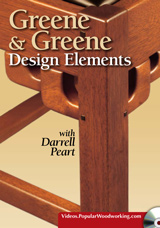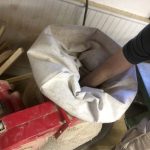We may receive a commission when you use our affiliate links. However, this does not impact our recommendations.
I am both a believer and disbeliever in the rules of design (ROD). My relationship with them is not a simple black and white matter. Ultimately, I believe the rules to be detrimental to art of any kind. But I do not disbelieve in their credibility. My relationship to the ROD is complicated!
We are inherently drawn to nature. Many of the shapes, patterns, colors and sounds expressed in art are essentially derivatives of nature. The sinuous forms and patterns of the nautilus spiral are mesmerizing. Deep bass musical notes connect us our mother’s heartbeat, to back when we were in the womb. The Golden Section, along with other ratios and equations, can mathematically replicate the shapes found in nature.
In the very beginning of my career I knew nothing of the ROD. Soon after though, I became serious and immersed myself in them. This was back B.C. years (before computers). I had the ROD permanently taped to my drawing board and followed them with a fervor. I dissected masterworks looking for Golden Rectangles. I am convinced this was not without benefit to me. Through it all, I believe I gained a more conscious understanding of what attracts me to different shapes and ratios.
There is a huge HOWEVER though! While we can express pleasing shapes through specific ratios, implementation is problematic. I am often turned off by dissections of artwork that cram as many Golden Rectangles into a given space as possible – these often come off as contrived. Using equations and ratios we can consistently produce mildly pleasing designs. These mathematically fabricated pieces, however, rarely rise to the level of inspiring. There is something lacking in their soul.
Creativity is not motivated by equations and ratios. Instead it is driven by two innate components: intuition and inspiration.
Inspiration is the original spark that ignites the creative fires. It is the very thing that makes time stand still for hours while the process is being played out. Inspiration knows no bounds, and in fact, will utterly suffocate if put into a neat little box and told to conform. Intuition is inspiration’s symbiotic cohort. It is keenly sympathetic and like an adoring parent gently guides the new-born inspiration from a base that is deeply instinctual but tempered with experience and knowledge.
For years, I had an iron grip on the ROD and only out of considerable desperation and frustration did I break away. Once free though, function became my only restraint. With the ROD finally behind me, inspiration and intuition had free rein. For the first time I felt my work truly had fire in its soul. The ROD had a place in my development; I had no doubt benefited from them. But at a certain point they held me back and became an anchor.
I was not so surprised to find Louis Sullivan saying much the same over 100 years ago in “The Kindergarten Chats.” Sullivan, an architect, is credited with the phrase “Form Follows Function.” He is known as the father of the modern skyscraper, and was mentor to Frank Lloyd Wright (who called Sullivan “the master”).
“……formulas are dangerous things. They are apt to prove the undoing of a genuine art, however helpful they may be in the beginning to the individual. The formula of an art remains and becomes more and more rigid with time, while the spirit of that art escapes and vanishes forever. It cannot live in text-books, in formulas or in definitions.”
If I had it to do over I would probably skip all the raw number stuff and start with something more user-friendly. From my previous studies of the ROD, one book stands out. “Arts & Crafts Design” by William H. Varnum. While I see some flaws in Varnum’s rules, I like his approach to basic balance and proportion. In his book, along with the ratios, he gives us terms such as “primary mass” and “dominant section.” These terms put a visual image in my head and a “feel” for the subject. Raw numbers on the other hand simply remain raw numbers. But even this moderated approach must ultimately be left behind. Creativity must have as few restrictions as possible. To achieve our best work we must ultimately trust our intuition.
My advice to beginning designers is this: Make a serious study of the rules. But don’t become attached to them. At some point you will need to leave them behind. But along with the ROD, take time to exercise your imagination as well. Seek out designs that fire you up emotionally. Empty your mind and simply stare! Do not intellectualize. Just feel the design and soak it in. Plant this deep in your subconscious and wait for it to bubble back up sometime later.
Think of the rules as “training wheels.” They have their place, but in the end they just get in the way. Seek to develop your imagination and intuition. Eventually break free of the nest and learn to fly!
 Darrell Peart’s latest video is “Greene & Greene Design Elements” – watch a preview here. And check out his many books, videos and magazine articles.
Darrell Peart’s latest video is “Greene & Greene Design Elements” – watch a preview here. And check out his many books, videos and magazine articles.
Here are some supplies and tools we find essential in our everyday work around the shop. We may receive a commission from sales referred by our links; however, we have carefully selected these products for their usefulness and quality.










